Valve Steam Deck vs Nintendo Switch OLED: What should you buy?
Valve Steam Deck vs Nintendo Switch OLED: What should you buy?

Now that our Nintendo Switch OLED review is done and dusted and the release date of the Valve Steam Deck is incoming, it's a proficient time to appraise which may be worth your money.
While both machines are rather dissimilar at their core, with the Switch OLED beingness a closed Nintendo system and the Steam Deck existence effectively a portable PC, both are still gaming handhelds that have and are prepare to galvanise the interest of gamers who want more than scope to their portable gaming.
- Play the best PC games
- Also try the best Nintendo Switch games
Deciding whether you want a Steam Deck or a Switch OLED, then, is more than almost assessing your ain gaming habits than comparing the minutiae of each device. If you're curious most which device might accommodate your preferences meliorate, read on for our preliminary Valve Steam Deck vs. Nintendo Switch OLED observations.
Steam Deck vs Nintendo Switch OLED: Specs compared
| Valve Steam Deck | Nintendo Switch OLED | |
| Price | $399 / $529 / $649 | $350 |
| Release Date | December 2021 | October 2021 |
| Screen | 7" LCD touchscreen, 1280 10 800 | 7" OLED touchscreen, 1280x720 |
| CPU | AMD Zen 2, 3.5 GHz | Nvidia Tegra X1 |
| GPU | AMD 8 RDNA | Custom Nvidia Maxwell |
| Memory | 16 GB | 4 GB |
| Storage | 64 GB eMMC / 256 GB SSD / 512 GB SSD | 64 GB eMMC |
| Television set Connectivity | Dock (Included) | USB-C, Dock (Not included) |
Steam Deck vs Nintendo Switch OLED: Price and release date

The Steam Deck, similar the Nintendo Switch, comes in multiple configurations. In its default configuration (64GB eMMC storage), the Steam Deck costs $399. With a 256GB SSD, it costs $529, and with a 512 GB SSD, it costs $649. The $529 version comes with a carrying example; the $649 version comes with a case, likewise equally a more than scratch-resistant screen. All models are due for release on February 25.
The Nintendo Switch OLED comes in two versions, but the differences are purely cosmetic. Ane comes with white Joy-Con controllers, while the other comes with neon red-and-blue Joy-Cons. The system costs $350, and launched on October 8. Remember, likewise, that the Switch OLED will non supercede the current bones Switch ($300) or Switch Lite ($200).
Right from the commencement, it'south articulate that Valve is courting a more than enervating audience. At $399, the cheapest Steam Deck costs more than the most expensive Switch variant; at $649, the virtually expensive Steam Deck costs more than iii times as much every bit the Switch Calorie-free.
Steam Deck vs Nintendo Switch OLED: Design and display
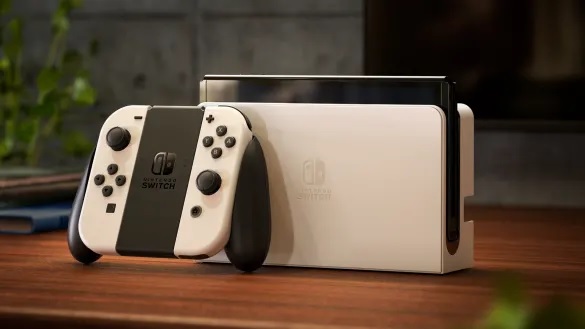
On the one hand, the Steam Deck and the Switch OLED look similar, as they're both handheld consoles, optimized to run modern games. On the other manus, the Steam Deck has more accommodations for PC gaming, while the Switch OLED keeps things simpler.
Both devices are rectangular consoles with seven-inch touchscreens at their centers. The Switch's OLED screen caps out at 720p while the Steam Deck's LCD screen supports a slightly higher 1280 x 800 resolution. Both have directional buttons and an analog stick on the left, every bit well equally another analog stick and face up buttons on the right.
What'southward different is that the Steam Deck also features a trackpad on either side, presumably for PC games and applications that require a mouse input. The Steam Deck also features a congenital-in mic – although oddly, there doesn't seem to exist a camera. In-game chat should exist easy, but video chats may be a little more hard.
The Switch OLED uses the aforementioned Joy-Cons as the electric current Switch model, which ways you'll have to deal with the separated directional buttons and the somewhat superfluous Capture push. At that place'due south always the possibility of Joy-Con drift, too, simply nosotros'll have to wait and see whether Nintendo has ironed out this problem one time and for all.
From size and weight perspectives, the Switch OLED has a definite reward, measuring ix.5 x 4.0 x 0.6 inches and weighing 14.9 ounces. Compare and contrast to the Steam Deck, which measures 11.7 x 4.half dozen x 1.9 inches and weighs 23.6 ounces. While nosotros won't know for sure until we get our hands on both devices, it seems similar the Switch OLED will exist much more than comfortable to hold for long periods of time.
Steam Deck vs Nintendo Switch OLED: Specs and power
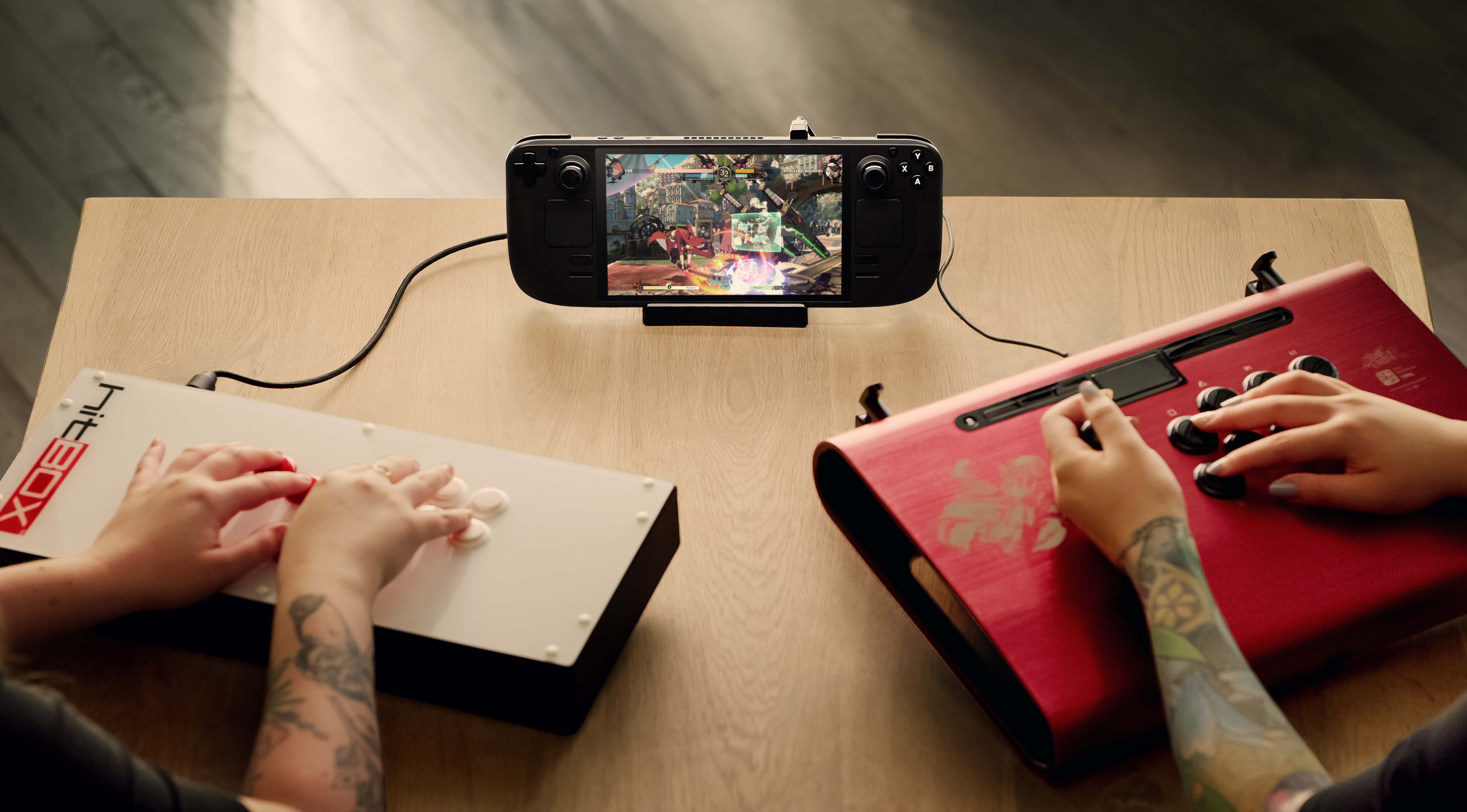
One area where the Steam Deck has a definite advantage is in terms of hardware. The Switch wasn't the well-nigh powerful system when it debuted in 2017, and the Switch OLED hasn't changed much of the hardware. Nintendo's latest variant features an Nvidia Tegra X1 processor, an Nvidia Maxwell-based GPU and iv GB RAM, just like the base model. Instead of the base of operations models 32GB eMMC flash memory, even so, the OLED will feature 64GB. You lot can also store games on a microSD card, but your save data is tethered to your console, unless you lot pay for Nintendo Switch Online ($20 per year) and its cloud relieve features.
As mentioned above, the Steam Deck has variable storage options, depending on how much you're willing to pay. But all models have the same CPU and GPU: an AMD Zen 2 3.5 GHz and an AMD 8 RDNA, respectively. The arrangement features 16GB RAM and, conveniently, total Bluetooth 5.0 back up. While the Switch OLED will employ express Bluetooth capacities, y'all probably won't exist able to connect your own headphones or controllers, since you can't do so on the current Switch.
While information technology's difficult to compare specialized CPUs and GPUs for consoles, there's no denying that the Steam Deck sounds much more than powerful. We don't know exactly what kind of output we tin look when hooked up to a Tv set, merely the Switch OLED targets 1080p resolutions at 30 frames per second. The Steam Deck should exist able to surpass that.
It's too worth noting that the battery life on both consoles will be highly variable, depending on what you're playing. Steam Deck promises 7-8 hours, while the Switch OLED targets betwixt 5-ix hours. This category volition be hard to gauge until nosotros tin run some apples-to-apples tests, nevertheless.
Steam Deck vs Nintendo Switch OLED: Game selection
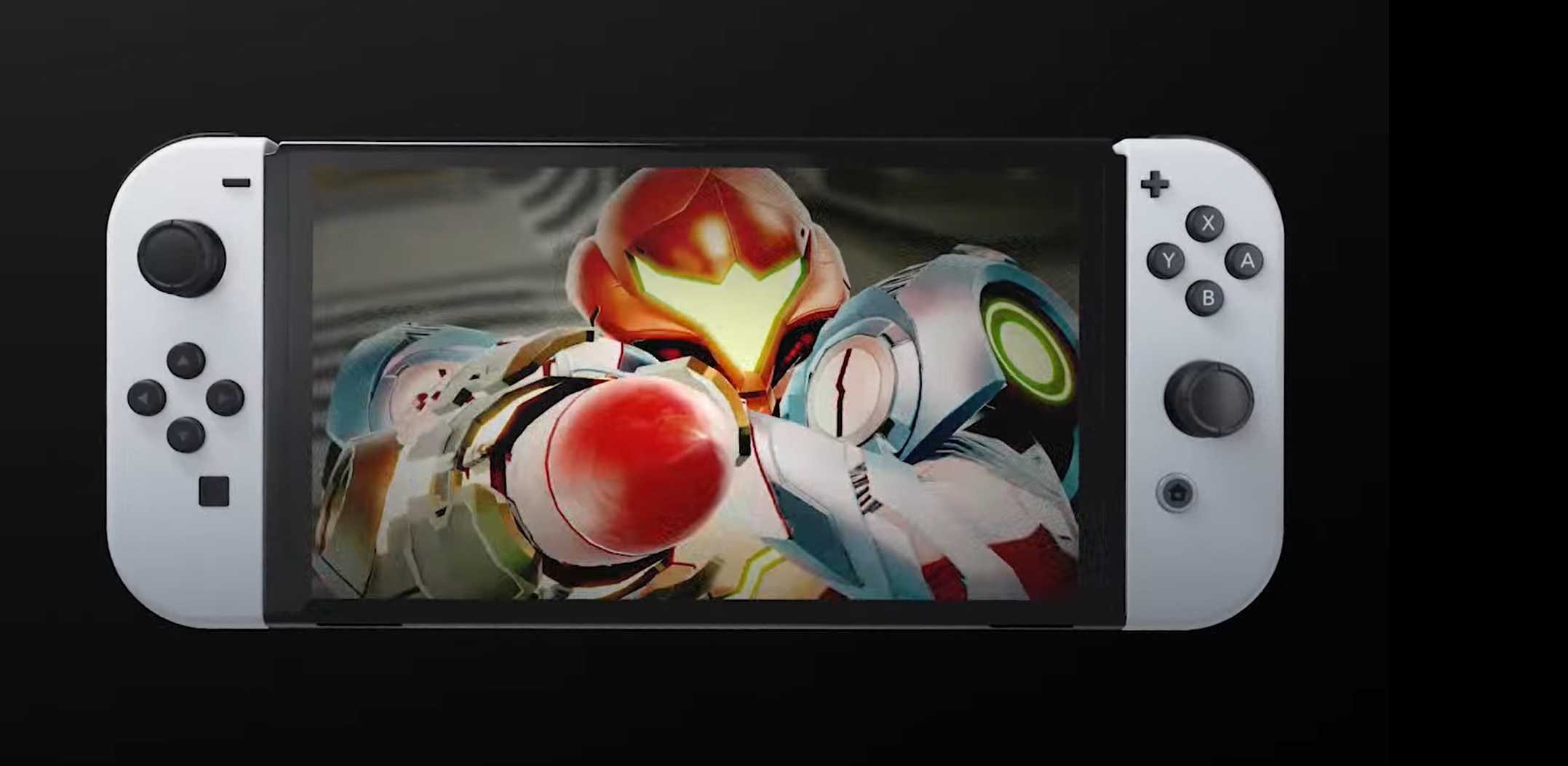
The Steam Deck has the potential to run hundreds — if not thousands — more games than the Switch OLED. That's because at its cadre, the Steam Deck is merely a minor PC, and PCs accept access to all of the all-time PC games and the widest game library effectually. You'll be able to install just about anything on Steam, of course, but Valve likewise promises that y'all'll be able to "install and use PC software" normally. In theory, this means that if yous can find a way to download your software, you can play it. (It'south especially interesting to call up virtually how the Steam Deck might cooperate with Xbox Game Pass, but at that place are no hard details on that potential crossover just yet.)
Compare and dissimilarity to the Nintendo Switch OLED, which has access to the best Nintendo Switch games and the full Switch library. While the Steam Deck's potential game pick will be much, much bigger, the Switch is not without its charms. Nintendo yet has a strong option of exclusive titles, from The Fable of Zelda: Breath of the Wild, to Splatoon ii, to the splendid Metroid Dread. You only won't be able to play these games on a PC, at to the lowest degree not without some convoluted and shady workarounds.
And Epic Games has confirmed that Fortnite, a pop title on the Nintendo Switch, will not exist coming to Steam Deck natively.
From a library perspective, the pick betwixt a Steam Deck and Nintendo Switch OLED is very much similar the choice between a PC and a Nintendo Switch. Exercise you want the broadest selection of games, running at the best settings? Or exercise you want the high-quality Nintendo franchises that you can't become anywhere else?
Steam Deck vs Nintendo Switch OLED: Docking
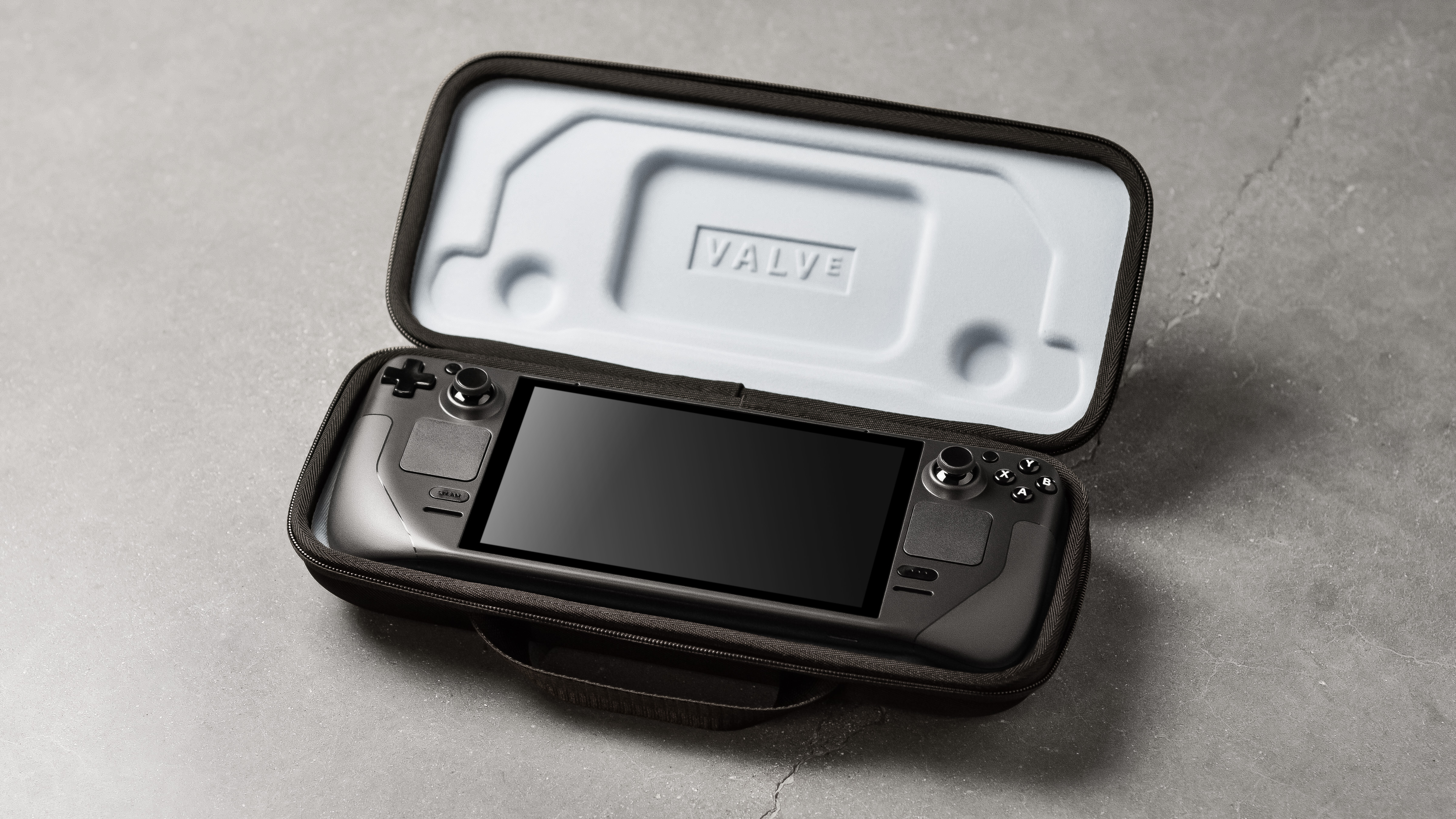
When it comes to docking, the Steam Deck and the Nintendo Switch OLED both accept their pros and cons. Like the regular Nintendo Switch, the Switch OLED comes with a dock. This means you can hook it up to a TV right out of the box, with minimal endeavor. On the other hand, information technology as well ways that you tin can't connect the Switch directly to a TV or monitor via USB-C, which would absolutely exist more convenient in many cases.
The Steam Deck, on the other hand, can connect to whatever display just like a PC tin can, provided you accept the correct adapters. According to Valve, the Steam Deck's USB-C port "can carry video, sound, input, etc." and can part on anything from an OLED monitor to a CRT TV. The tradeoff is that the Steam Deck won't come with a dock, although one will be available separately.
We're not withal sure how much the dock will price, although nosotros do know that it will hold the Steam Deck upright, and come with ports for USB-C, USB-A, DisplayPort, HDMI and Ethernet. Just exist aware that the HDMI output from the official dock will exist HDMI 2.0 rather than HDMI ii.1, which may limit resolution and frame rate.
Steam Deck vs Nintendo Switch OLED: Outlook
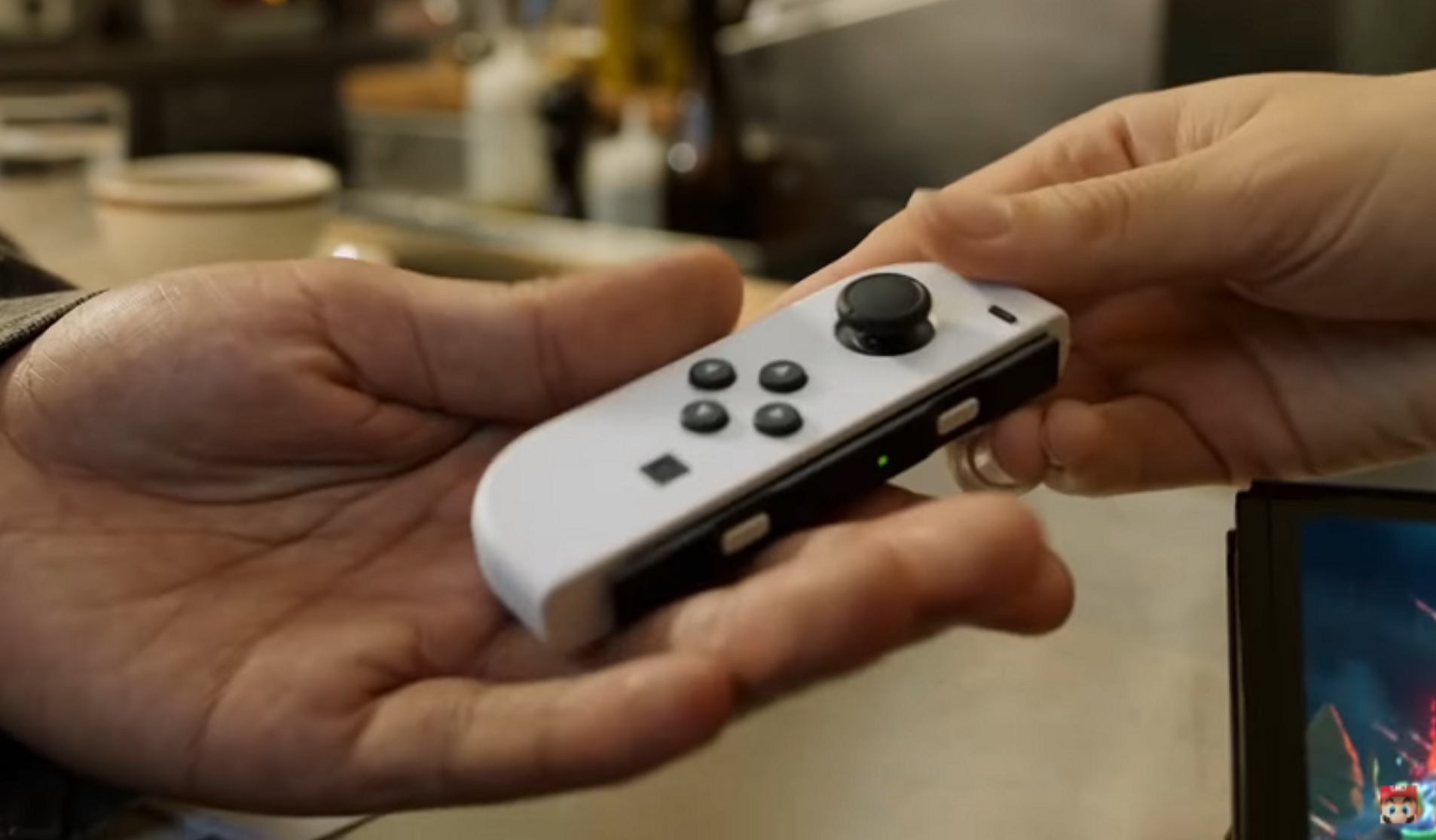
While we don't know exactly how the Steam Deck and the Nintendo Switch OLED will stack upward to each other in practice, we tin can say that they take very unlike demographics in mind. The Nintendo Switch OLED, like other Switch models, targets a console-centric audience, with a streamlined interface and a focus on Nintendo franchises.
The Steam Deck, on the other hand, seems like a much more powerful and open-ended device, letting yous run more than demanding games at a higher clip, and expecting you to bring at least some of your own hardware to the party.
And yet, while both devices wait promising, neither one seems indispensable correct now. The Nintendo Switch OLED, at its core, is just a slightly larger Switch, with a slightly prettier screen, and considerably more storage space. It's arguably worth an extra $l over the core Switch model, but it's probably not worth another $350 if you already own one of Nintendo's handheld hybrids.
Likewise, the Steam Deck looks promising, but Valve has had a tough time with hardware in the past. The company seemed to lose interest in the inventive Steam Controller and the user-friendly Steam Link long before they reached their total potential; the company'due south ambitious line of Steam Machines never materialized at all. And even if the Steam Deck performs beautifully, there's the question of how long it will terminal, as PC technology tends to advance much faster than console generations.
For the moment, we can say that PC gamers volition desire to go on an eye on the Steam Deck, while console gamers will desire to consider the Nintendo Switch OLED.
Source: https://www.tomsguide.com/news/valve-steam-deck-vs-nintendo-switch-oled
Posted by: goodsonsentes.blogspot.com


0 Response to "Valve Steam Deck vs Nintendo Switch OLED: What should you buy?"
Post a Comment